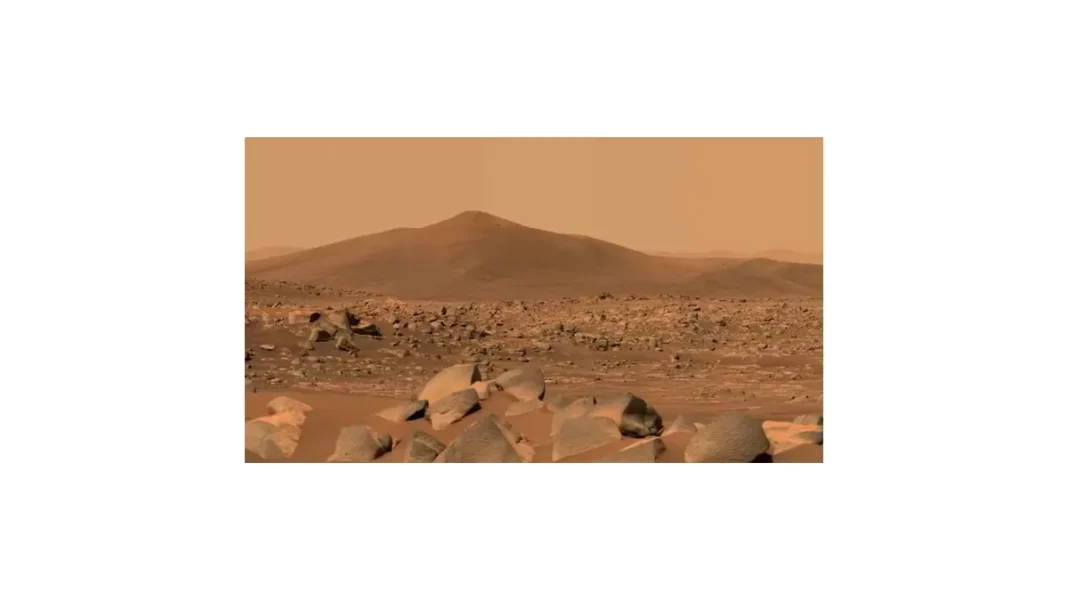A groundbreaking new study, published in the journal Science, reveals a startling discovery about the harsh environment on Mars. According to the study, cosmic radiation is actively destroying signs of ancient life on the red planet, making it difficult for scientists to find evidence of past organisms. The study highlights the urgency for future Mars exploration missions to prioritize deeper drilling, such as the upcoming Rosalind Franklin Rover mission by the European Space Agency (ESA).
For years, scientists have been searching for signs of ancient life on Mars, as it is believed to have once hosted liquid water and a potentially habitable environment. However, the latest research suggests that the surface of Mars is not as hospitable as previously thought. The study examined the effects of cosmic radiation on organic materials, such as lipids, which are commonly found in living organisms. The results show that these organic compounds degrade rapidly under the intense radiation present on the Martian surface, especially in salt-rich environments.
Lead author of the study, Dr. Ana Rodrigues from the UK Centre for Astrobiology at the University of Edinburgh, explains the impact of the findings, saying, “Our research indicates that the harsh radiation environment of Mars poses a significant challenge for finding traces of ancient life. It is important for future Mars missions to take this into consideration to increase the chances of success.”
The surface of Mars is constantly bombarded by cosmic radiation, which is a type of high-energy radiation that originates from deep space. Unlike Earth, Mars does not have a protective magnetic field or a thick atmosphere to shield it from such radiation. As a result, the surface is exposed to a radiation dose that is 2.5 times higher than the International Space Station and 700 times higher than on Earth.
The study also highlights the role of salt in amplifying the destructive effects of cosmic radiation. On Mars, salt is abundant and can be found in various forms, including salty soils, mineral deposits, and even in liquid form in some locations. The high concentration of salt particles on the Martian surface acts as a catalyst, accelerating the degradation of organic compounds under radiation.
These findings have significant implications for future Mars missions, especially those focused on the search for ancient life. Scientists suggest that traditional methods, such as analyzing surface samples, may not be enough to find definitive evidence of past life. Instead, they argue that deeper drilling is the key to bypassing the destructive effects of surface radiation.
The upcoming Rosalind Franklin Rover mission by ESA is a perfect example of this. The mission, scheduled to launch in 2022, aims to drill up to two meters below the surface of Mars to collect samples and analyze them for signs of past life. This method of exploration is expected to yield more accurate and reliable results, as the samples will be shielded from the harmful effects of radiation on the surface.
Dr. Manolis Manolis, a co-author of the study and a researcher at the Institute for Molecular Biology and Biotechnology at the Foundation for Research and Technology in Greece, emphasizes the importance of looking beneath the surface, stating, “To understand the history of Mars and whether it ever hosted life, we need to look beyond the surface and explore the subsurface environment where biomarkers are better preserved.”
The study’s findings also have implications for future human missions to Mars, as cosmic radiation can be harmful to astronauts’ health. NASA and other space agencies have been studying ways to protect humans from radiation on long-duration missions, and this research adds another layer of complexity to that challenge.
Despite the challenges posed by cosmic radiation, scientists remain optimistic and determined to unlock the mysteries of Mars. The new study’s findings provide valuable insights and highlight the importance of adapting our exploration strategies to the harsh conditions of the red planet. With more advanced technology and a deeper understanding of Mars, we may finally uncover the secrets of its past and pave the way for future human exploration.
In conclusion, the latest study on the destructive effects of cosmic radiation on Mars is a wake-up call for the scientific community. It highlights the need to focus on deeper drilling in future Mars exploration missions and rethink traditional methods of searching for signs of life on the surface. With ESA’s Rosalind Franklin Rover mission and other upcoming missions, we are one step closer to unraveling the mysteries of the red planet and potentially finding answers to one of the biggest questions in human history: are we alone in the universe?


